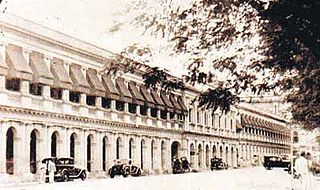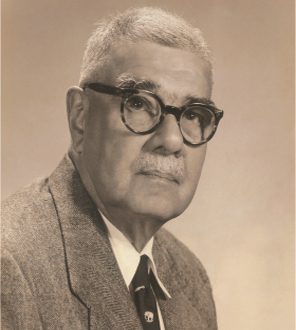Related Research Articles
Burgher people, also known simply as Burghers, are a small Eurasian ethnic group in Sri Lanka descended from Portuguese, Dutch, British and other European men who settled in Ceylon and developed relationships with native Sri Lankan women. The Portuguese and Dutch had held some of the maritime provinces of the island for centuries before the advent of the British Empire. With the establishment of Ceylon as a crown colony at the end of the 18th century, most of those who retained close ties with the Netherlands departed. However, a significant community of Burghers remained and largely adopted the English language. During British rule, they occupied a highly important place in Sri Lankan social and economic life.

Sir James Peiris was a prominent leader in the Sri Lankan independence movement, the first elected Vice-President of the Legislative Council of Ceylon and the first native Governor of Ceylon (Acting).

The Legislative Council of Ceylon was the legislative body of Ceylon established in 1833, along with the Executive Council of Ceylon, on the recommendations of the Colebrooke-Cameron Commission. It was the first form of representative government in the island. The 1931 Donoughmore Constitution replaced the Legislative Council with the State Council of Ceylon.
Sir Richard Francis Morgan was a Ceylonese lawyer, who served as the 13th Queen's Advocate of Ceylon and acting Chief Justice of Ceylon. He was the first Asian in the British Empire to receive a Knighthood and first Ceylonese to be a member of the Governor's Executive Council and was an unofficial (Burgher) member of the Legislative Council of Ceylon. He was the Crown Advocate who prosecuted famed bandit Saradiel.

The British Ceylon period is the history of Sri Lanka between 1815 and 1948. It follows the fall of the Kandyan Kingdom into the hands of the British Empire. It ended over 2300 years of Sinhalese monarchy rule on the island. The British rule on the island lasted until 1948 when the country regained independence following the Sri Lankan independence movement.

James Aubrey Martensz was a Ceylonese lawyer and politician.
Vivian Roy Stanley Schokman was a Ceylonese politician and physician.
James Richard Weinman was a Ceylonese lawyer, judge and legislator. He was a member of the Legislative Council of Ceylon and had served as District Judge of Colombo.
William Wright Beling was a talented Ceylonese watercolour painter of Dutch Burgher descent.
Peter Daniel Anthonisz was a well-known burgher doctor who was the first Ceylonese to obtain an M.R.C.P. and F.R.C.S. He was also the inaugural president of the Ceylon Branch of the British Medical Association and a member of the Legislative Council for nine years.
John Leonard Kalenberg van Dort, commonly known as J. L. K. van Dort, was a 19th-century Ceylonese artist of Dutch Burgher descent.

Louis Edmund Blaze, JP, OBE, BA (Calcutta), was a Sri Lankan educationist and the founder and principal of Kingswood College, Kandy (1891–1923).

The Dutch Burgher Union of Ceylon, known commonly as the Dutch Burgher Union (DBU), is an organisation of Dutch Burghers in Sri Lanka. It was established on 18 January 1908 by Richard Gerald Anthonisz.
Frederick Charles Loos was a Ceylonese lawyer and politician.
George Alfred Henry Wille was a Ceylonese proctor, notary public, journalist and politician.
John Godfind Hillebrand was a Puisne Justice of the Supreme Court of Ceylon. He was the first Burgher to sit on the bench of the Supreme Court of Ceylon as well as the first Burgher member of the Legislative Council of Ceylon from 1825 to 1843. He was appointed, after the death of John Fredrick Stoddart, as Acting Second Puisne Justice on 23 November 1839. Hillebrand retained his Legislative Council seat while on the bench. He was the first Proctor to sit on the Sri Lankan Supreme Court. He was replaced on the bench by William Ogle Carr
Egbert Bletterman, was the first official Postmaster General of Ceylon, serving from 1815 to 1817.
Dr William Gregory van Dort was a Ceylonese Burgher physician and politician.
Frederick Henry de Vos was a Ceylonese legal practitioner, genealogist and historian. He was fluent in Dutch, English, French and Flemish and published a number of papers relating to the Dutch East India Company involvement in Ceylon.
John Frederick Giffening was a Ceylonese proctor, public notary and politician.
References
- 1 2 Altendorff, B. V. (October 1950). "Journal of the Dutch Burgher Union of Ceylon". Genealogy of the Family of Martnesz of Ceylon. Dutch Burgher Union of Ceylon. XL: 146-148.
- ↑ The Ceylon Almanac and Compendium of Useful Information (PDF). Colombo: (J. Gilgot) Government Press. 1849. p. lxxxii.
- ↑ Colin-Thome, David (ed.). "Macaldeniya". History of Ceylon Tea. Dilmah. Retrieved 23 November 2022.
- ↑ "Journal of the Dutch Burgher Union of Ceylon". James Aubrey Martnesz C.B.E. 1885-1903. Dutch Burgher Union of Ceylon. LIII: 30. June 1963.
- ↑ Toussaint, J. R. (July 1945). "Journal of the Dutch Burgher Union of Ceylon" (PDF). Burgher members in Council. Dutch Burgher Union of Ceylon. XXXV: 98.
- ↑ Weiman, J. R. (1947). Our Legislature. Colombo: Associated Newspapers of Ceylon. p. 12-13.
- ↑ Marasinghe, Manabharana Lakshman (1981). Law and Development in Sri Lanka: An Historical Perspective 1796 - 1978 (PDF). University of London. p. 198.